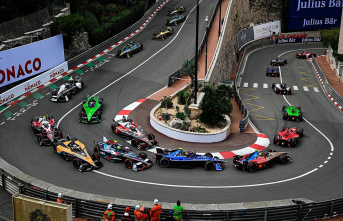Adif has already begun the electrification of the stretch Plasencia-Badajoz-Portuguese Border, the connection of the high-speed Madrid-Extremadura, which is a milestone since it is the first stretch of electrified railways in this autonomous community. These actions were initiated in the stretch Plasencia-Fork Peñas Blancas (about 15 miles north of Mérida) with the work of lifting of poles for the catenary in the environment of Carmonita (Badajoz), between Merida and Caceres, according to sources in the loader rail.
MORE INFORMATION
The slow train journey from extremadura to the TWENTY-first century The wood sleepers of the NINETEENTH century, the train from extremadura are already historyThe works, which were awarded, amounting to 30.1 million euros, provide for the execution of the construction project of the installation of the catenary along the 125 kilometres of that route. In this sense, between Plasencia and the fork Peñas Blancas will be hoisted about 4,000 poles catenary approximately, both in the zone a platform with no way mounted yet, as in the area that already has a route installed.
in Addition, in regard to the lines of the conventional network to complement the high speed, it will act in the line Monfragüe-Plasencia (between the link Plasencia station, Plasencia), Madrid-Valencia de Alcántara (between the link with the stretch of the high speed line and the station of Cáceres) and in the line Aljucén-Cáceres (link with the platform of high-speed stretch Cáceres-Aldea del Cano, and the season of Cáceres), as well as the branch line south of Cáceres. This project also includes electrification of stations, Plasencia and Cáceres and positions of overtaking and parking of trains and blocking in Terzuelo and Aldea del Cano.
it is Also in execution of the contract of the traction power substations and auto-transformation centers associated stretch-Plasencia-Badajoz, awarded by 22 million euros. On the other side, Adif has already begun the process to tender the stretch remains to electrify, the period between Merida (Peñas Blancas), and Badajoz, which requires environmental processing.
the jobs in the high-speed line Madrid-Extremadura, approximately 450 kilometres in length, of which around 205 operate the autonomous community of extremadura, with a cost of implementation, estimated 3.448 million euros and have been divided in three different sectors: Madrid–Oropesa (200 km), Talayuela–Plasencia (68,6 km) and Plasencia–Badajoz (164,6 km). This last will be the first to enter service.
The works of platform of the section Plasencia-Badajoz are moving towards its conclusion this year, according to the schedule. All of the works required for the commissioning of the section are executed, with the exception of the stretch of south access to Caceres and the branch connection in Plasencia, who are in their final phase.
In terms of the track assembly, which is carried out in iberian gauge with ties, multi-purpose to allow for the width change to international in the future, is practically finished on the trip Cáceres-Badajoz and around 50% between Plasencia and Cáceres. In addition you are going to start the construction of the duplication of track Cáceres-Mérida and the mounting of the stretch of access to the south of Cáceres. Also located virtually at the conclusion of the facilities of civil protection and security in the tunnels of the line, as well as the execution screens of acoustic protection.
once the construction of the road and the facilities of control, command and signalling, Adif will launch the corresponding tests on the infrastructure to apply for the authorisation of placing in service of the State Agency for Rail Safety (AESF). When you complete the testing phase of Adif, will start the training of machine operators Renfe and overcome both phases, the AESF will communicate his permission for the trains to start to run on the new infrastructure.
Post electrification of the high speed line Madrid-Extremadura.First phase
The commissioning of the route Plasencia-Badajoz will allow the use of the new platform, which in this first phase of operation will be connected to the current conventional line Madrid-Extremadura at the height of Plasencia. In this way, the trains that travel between Madrid and Extremadura will get improvements in journey times as a result of be able to circulate already for a platform designed and built in accordance with the requirements of the high speed, in which, so far, we have invested more than 1200 million euros, being the total investment planned in the same of around 1,400 million.
This route has four stations—Plasencia, Caceres, Merida and Badajoz— they are going to be remodelled to implement the features and services needed to accommodate the high-speed services.
parallel To this, Adif continues to move forward in the implementation of the stretch Oropesa-Talayuela-Plasencia of the high-speed line, whose conclusion does not affect the commissioning of the stretch Plasencia-Badajoz. This route already with 19.1 miles of platform is complete in two of its seven sections (Talayuela-Arroyo de Santa Maria and Navalmoral de la Mata-Casatejada), in which, in addition, the track assembly was recently awarded a contract (19,9 miles).
For its part, the stretch Oropesa-Madrid is in phase of drafting of the informative study, contract that was awarded by the Ministry of Development in February 2018, with an estimated cost of 1,120 million euros.
Date Of Update: 26 December 2019, 19:00






